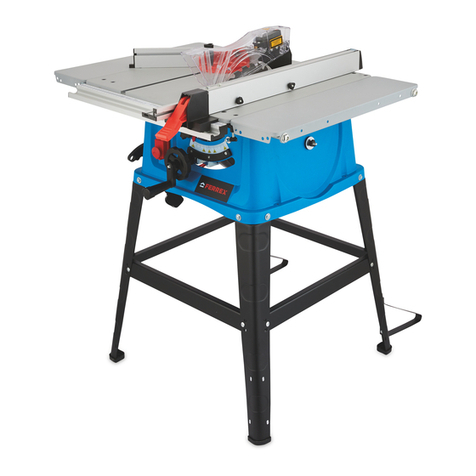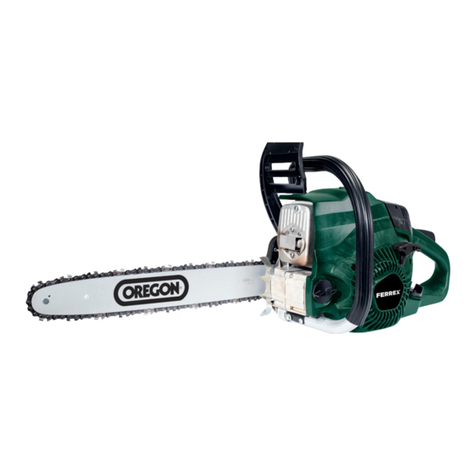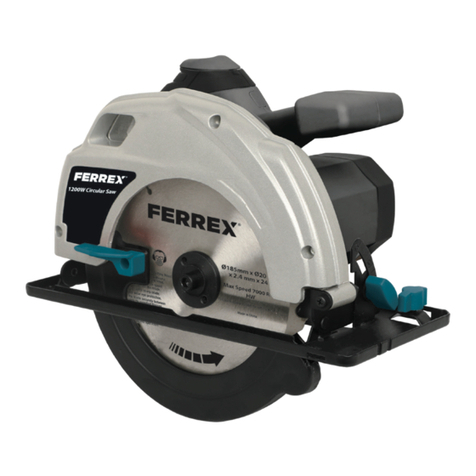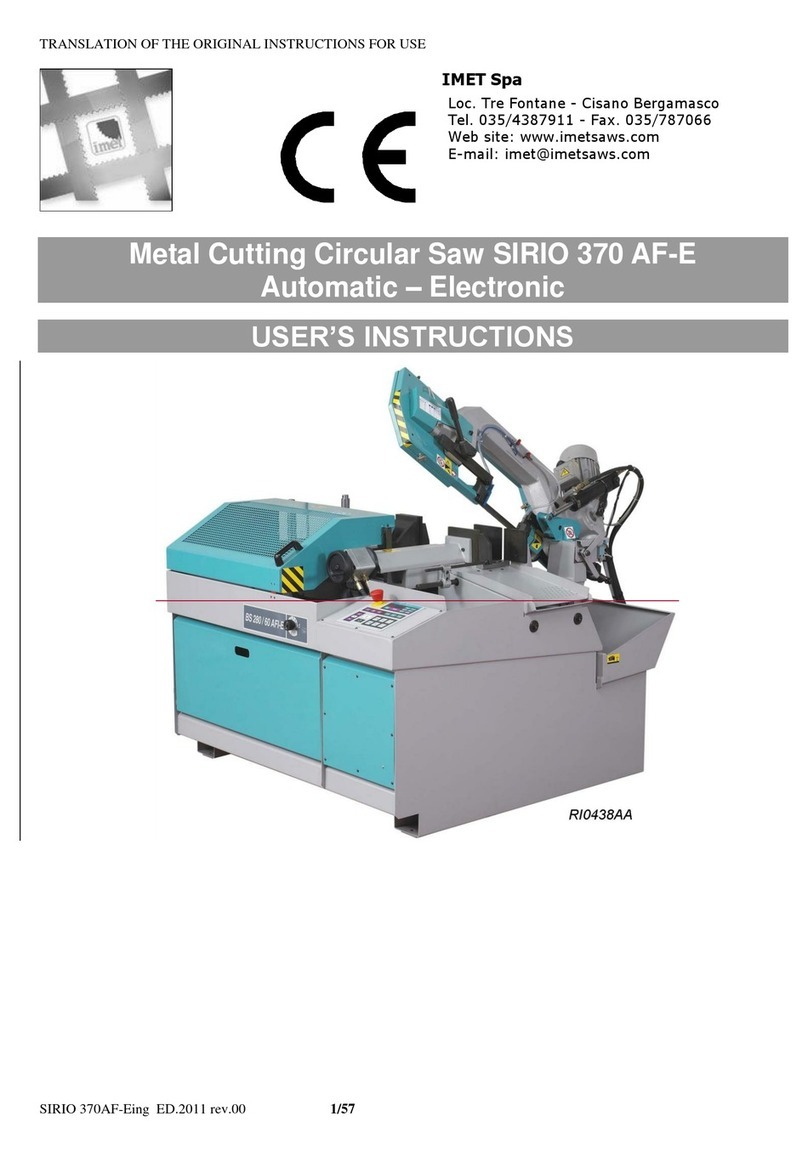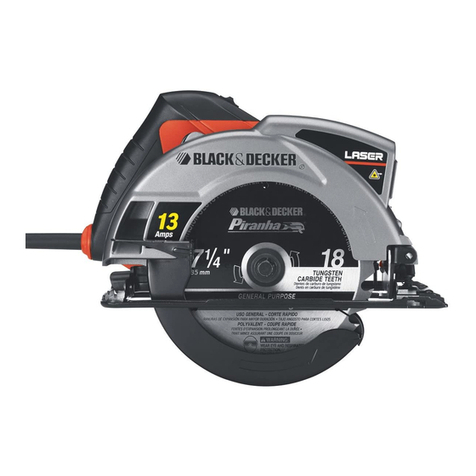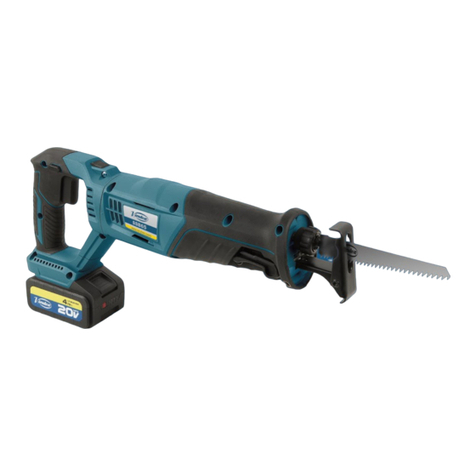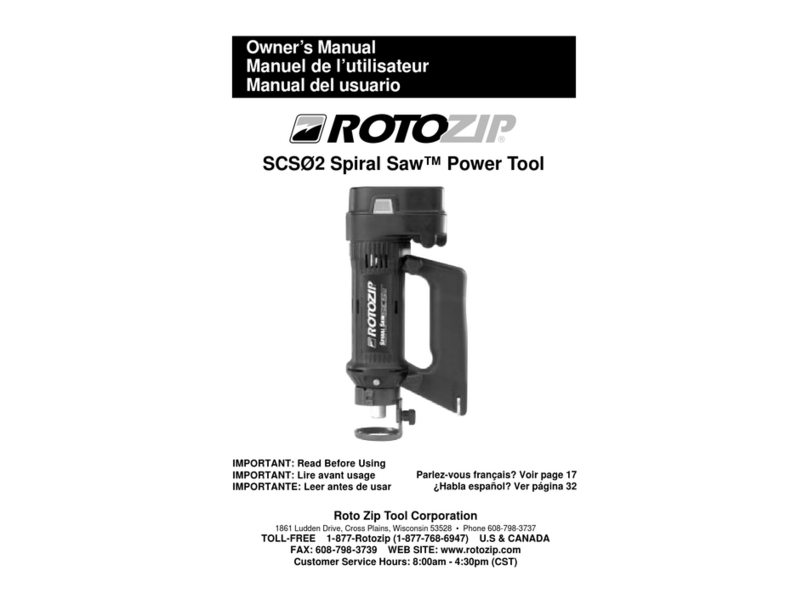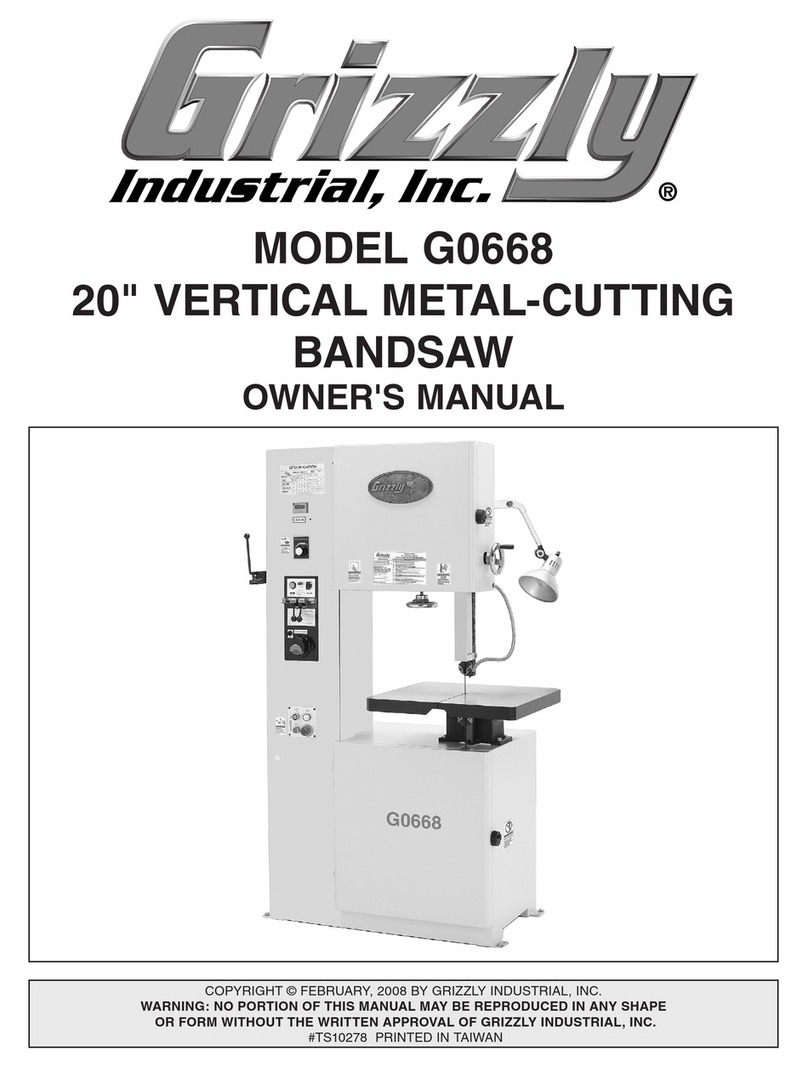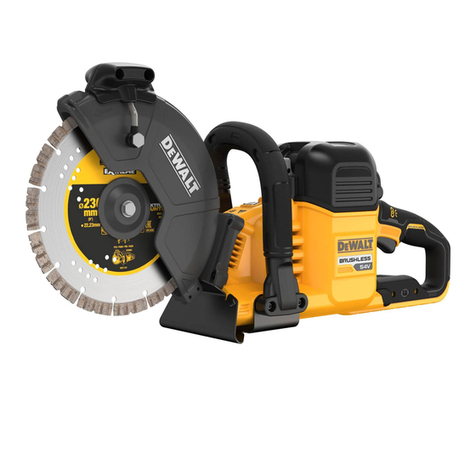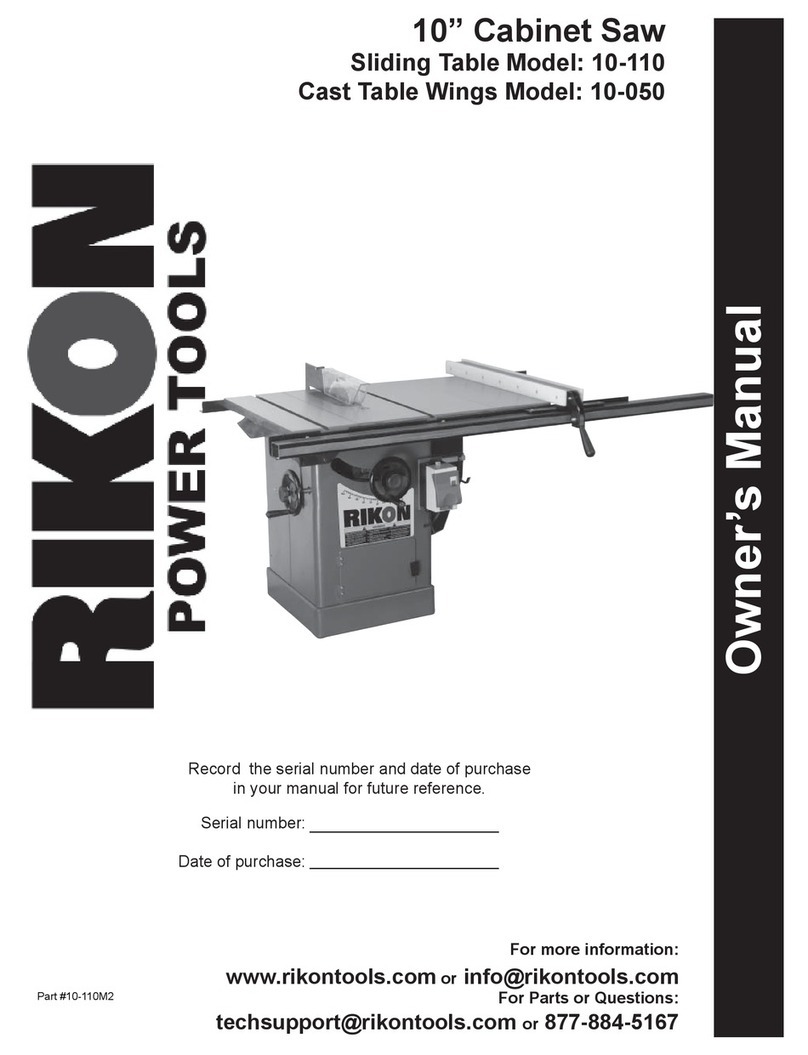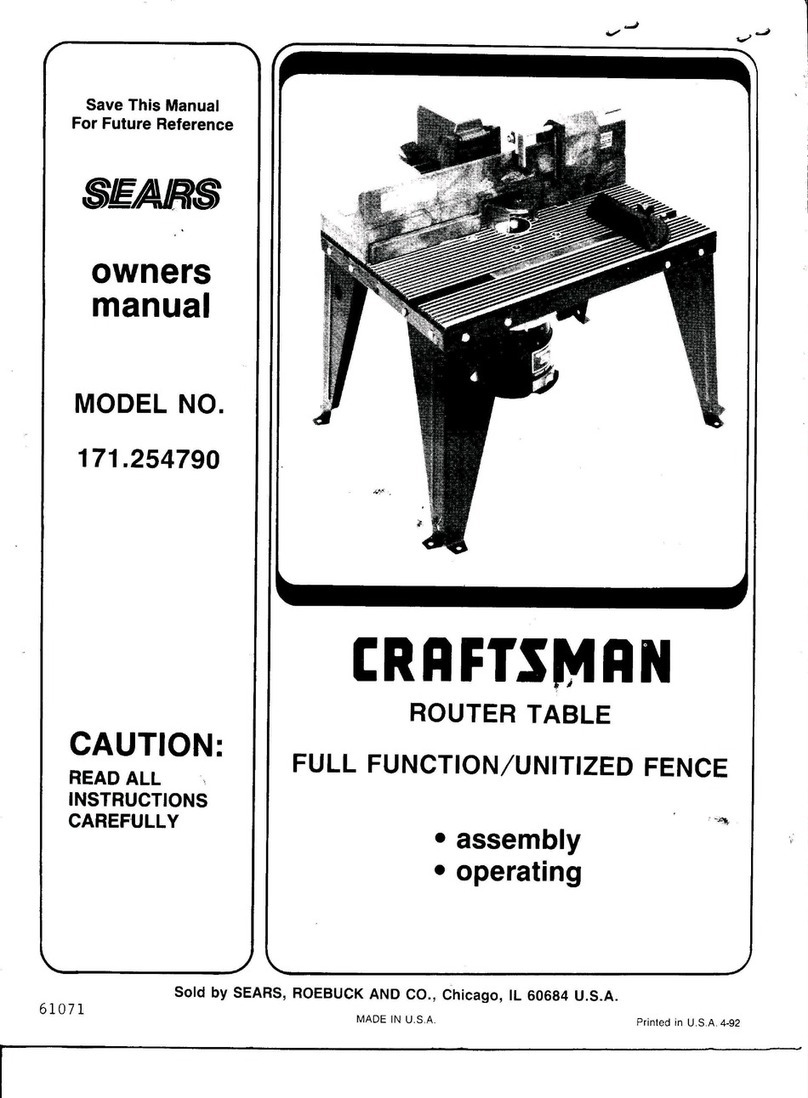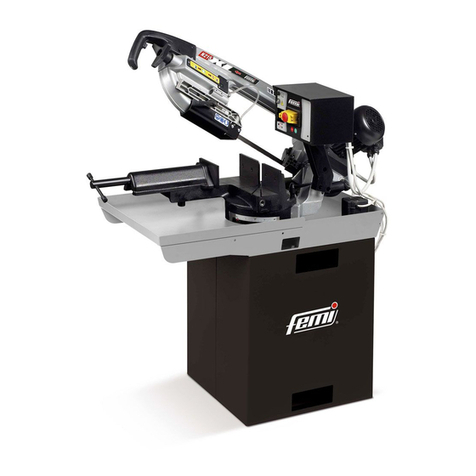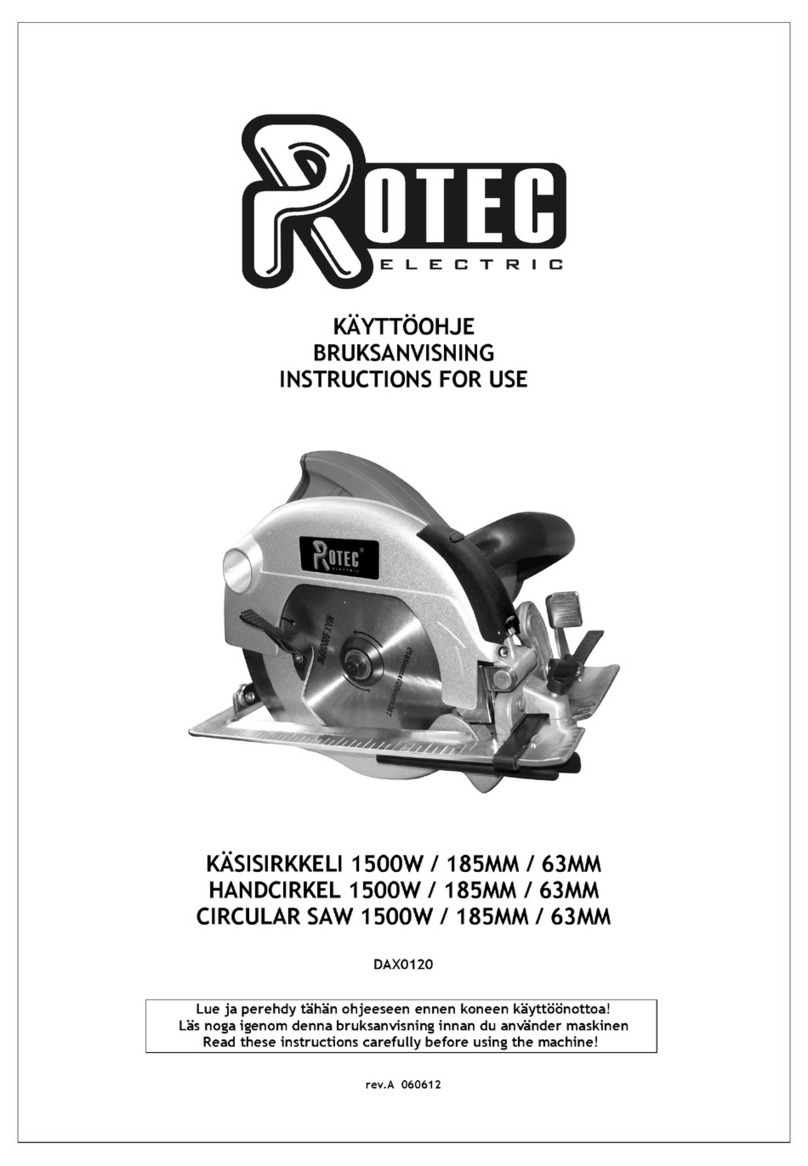FERREX FAS 20-I User manual

20 V LI-ION CORDLESS
RECIPROCATING SAW
FAS 20-I
User Manual
ID: #05007
m
y
h
a
n
s
e
c
o
n
t
r
o
l
.
c
o
m
M
A
N
U
A
L
D
E
V
E
L
O
P
E
D
I
N
G
E
R
M
A
N
Y
User-friendly
Manual
Original instructions

Scope of delivery................................................................. 3
Components ............................................................................. 6
General information............................................................ 7
Reading and storing the user manual ..................................7
Proper use..................................................................................7
Residual risks............................................................................ 8
Explanation of symbols .......................................................... 8
Safety ...................................................................................9
Explanation of notes ............................................................... 9
General power tool safety instructions................................ 9
Cordless tool use and care..................................................... 12
Safety instructions for reciprocating saws ......................... 13
Supplementary safety instructions ..................................... 14
First use.............................................................................. 16
Check the product and package contents ......................... 16
Operation........................................................................... 16
Inserting/replacing the battery........................................... 16
Inserting/changing the saw blade...................................... 17
Adjusting the saw shoe .........................................................18
Operation.................................................................................18
Troubleshooting................................................................20
Maintenance and care........................................................21
Cleaning ...................................................................................22
Inspecting the product..........................................................22
Storage .....................................................................................22
Transport..................................................................................22
Technical data ................................................................... 23
Battery and charger information..................................... 23
Noise/vibration information ............................................24
Disposal.............................................................................. 25
Disposing of the packaging ..................................................25
Disposing of the product .......................................................25
Declaration of conformity.................................................26
Table of contents

3
Scope of delivery
Dok./Rev.-Nr. 198266_20200722
A
1 2 3 4 5 6
11
10
9
8 7
B
9
Scope of delivery

4
Scope of delivery
C
D
6 7 4

5
Scope of delivery
F
1
11
E
8 5

6
Scope of delivery
Components
1Switch lock
2Vents
3Front handle
4Saw blade lock
5Saw shoe
6Saw blade
7Saw blade holder
8Locking lever
9Battery holder
10 Handle
11 On/Off switch

General information
7
General information
Reading and storing the user manual
This user manual accompanies this 20 V Li-Ion Cordless Reciprocating
Saw FAS 20-I (referred to below only as the “product”). It contains impor-
tant information on safety, usage and care.
Before using the product, read the user manual carefully. Pay particular
attention to the safety notes and warnings. Failure to comply with the instructions in
this user manual may result in severe injury or damage to the product.
Comply with valid local or national provisions concerning the use of this product. Keep
this user manual in a safe place for future reference. Make sure to include this user
manual when passing the product on to third parties.
Proper use
The product is only intended for private use – such as hobby or do-it-yourself work –
when undertaking the following:
• sawing wood, metal or plastics
Any other applications are expressly prohibited and are deemed improper use.
This product does not come with a rechargeable battery or charger. These must be
bought separately. The product can be operated with the 20 V rechargeable battery
or with the 20/40 V rechargeable battery available from Activ Energy®. Only use the
rechargeable batteries specified in the chapter ‘Technical data’ for the product. Do not
operate the product with rechargeable batteries from other manufacturers.
Neither the manufacturer nor the retailer can accept any responsibility for injury, loss
or damage caused by misuse of this product of any kind. Examples of misuse are giv-
en in the following non-exhaustive list:
• using the product for other purposes other than those intended;
• failure to observe the safety notes and warnings as well as the assembly, operat-
ing, maintenance and cleaning instructions contained in this user manual;
• failure to comply with any regulations relating to accident prevention, occupational
health or safety, which specifically and/or generally apply to the use of the product;
• use of accessories and spare parts not intended for the product;
• changes to the product;
• product repairs performed by parties other than the manufacturer or a qualified
professional;
• use of the product for commercial, artisan or industrial purposes;
• operation or maintenance of the product by persons not familiar with how to
handle the product and/or who are not aware of the related risks.

General information
8
Residual risks
Despite proper use, inconspicuous residual risks cannot be completely ruled out.
The following risks may arise due to the design of the product:
• Touching the exposed areas of the saw blade;
• Reaching into the rotating saw blade (cut injury);
• Kickback of the work piece and parts of the work piece if used improperly.
Explanation of symbols
The following symbols are used in this user manual, on the product or on the packaging.
This symbol provides you with useful supplementary information about
the use.
Declaration of conformity (see chapter “Declaration of conformity”):
Products marked with this symbol meet all applicable Community regu-
lations for the European Economic Area.
Read the user manual.
Wear protective goggles.
Wear a respirator mask.
Wear ear protection.

Safety
9
Safety
Explanation of notes
The following symbols and signal words are used in this user manual.
WARNING!
Indicates a hazardous situation that, if not avoid-
ed, could result in death or serious injury.
CAUTION!
Designates a dangerous situation that may result
in minor or moderate injury if not avoided.
NOTICE!
Warns against potential damages to property.
General power tool safety instructions
WARNING Read all the safety notes, instructions, illustrations and tech-
nical details supplied with this power tool. Failure to follow the safety notices
and instructions may result in an electric shock, fire and/or severe injury.
Save all warnings and instructions for future reference.
The term “power tool” used in the safety instructions refers to mains-operated
power tools (corded) and battery-powered power tools (cordless).
Work area safety
a) Keep your work area clean and well lit.
Cluttered or dark areas
invite accidents.
b) Do not operate power tools in explosive atmospheres, such as
in the presence of flammable liquids, gases or dust.
Power tools
create sparks which may ignite the dust or fumes.
c) Keep children and bystanders away while operating a power
tool.
If you are distracted, you could lose control of the power tool.
Electrical safety
a) Power tool plugs must match the outlet. Never modify the plug in
any way. Do not use any adapter plugs with earthed (grounded)
power tools.
Unmodified plugs and matching outlets will reduce risk
of electric shock.

Safety
10
b) Avoid body contact with earthed or grounded surfaces, such as
pipes, radiators, ranges and refrigerators.
There is an increased
risk of electric shock if your body is earthed or grounded.
c) Do not expose power tools to rain or wet conditions.
Water enter-
ing a power tool will increase the risk of electric shock.
d) Do not use the cord for improper purposes such as for carrying the
power tool, for hanging it up or for pulling or unplugging it from
the socket. Keep cord away from heat, oil, sharp edges and moving
parts.
Damaged or entangled cords increase the risk of electric shock.
e) When operating a power tool outdoors, use only extension cords
that are suitable for outdoor use.
Use of a cord suitable for outdoor
use reduces the risk of electric shock.
f) If operating a power tool in a damp location is unavoidable, use
a residual current device (RCD) protected supply.
Use of an RCD
reduces the risk of electric shock.
Personal safety
a) Stay alert, watch what you are doing and use common sense
when operating a power tool. Do not use a power tool while you
are tired or under the influence of drugs, alcohol or medication.
A moment of inattention while operating power tools may result in
serious personal injury.
b) Use personal protective equipment. Always wear eye protection.
Protective equipment such as dust mask, non-skid safety shoes, hard
hat, or hearing protection used for appropriate conditions will reduce
personal injuries.
c) Prevent unintentional starting. Ensure the switch is in the off-po-
sition before connecting to power source and/or battery pack,
picking up or carrying the tool.
Carrying power tools with your
finger on the switch or connecting the power tool to a power supply
while the switch is set to “on” may lead to accidents.
d) Remove any adjusting key or wrench before turning the power
tool on.
A wrench or a key left attached to a rotating part of the pow-
er tool may result in personal injury.
e) Take care to keep a normal body position. Maintain a stable
stance and balance at all times.
This enables better control of the
power tool in unexpected situations.

Safety
11
f) Dress properly. Do not wear loose clothing or jewellery. Keep
your hair and clothing away from moving parts.
Loose clothes,
jewellery or long hair can be caught in moving parts.
g) If there is an option for installing dust suction devices and dust
containers, these should be attached and used correctly.
Use of
dust collection can reduce dust-related hazards.
h) Do not be lulled into a false sense of security and ignore the
safety rules for power tools, even if you are well acquainted with
power tools, having used them frequently.
Using power tools
without due care and attention can cause serious injuries in a split
second.
Power tool use and care
a) Do not overload the power tool. Use the correct power tool for
your application.
The correct power tool will do the job better and
safer at the rate for which it was designed.
b) Do not use the power tool if the switch does not turn it on and
off.
Any power tool that cannot be controlled with the switch is dan-
gerous and must be repaired.
c) Disconnect the plug from the power source and/or remove the
rechargeable battery from the power tool before making any
adjustments, changing insertion tools or storing the power tool.
Such preventive safety measures reduce the risk of starting the pow-
er tool accidentally.
d) Store idle power tools out of the reach of children. Do not let any
individual who is not familiar with the power tool or who has not
read these instructions operate this power tool.
Power tools are
dangerous in the hands of untrained users.
e) Maintain power tools and insertion tools with care. Check for mis-
alignment or binding of moving parts, breakage of parts and any
other condition that may affect the power tool’s operation. If any
parts of the power tool are damaged, have them repaired before
use.
Many accidents are caused by poorly maintained power tools.
f) Keep cutting tools sharp and clean.
Properly maintained cutting
tools with sharp cutting edges are less likely to bind and are easier to
control.

Safety
12
g) Use the power tool, accessories and fitted tools etc. in accordance
with these instructions, taking into account the working con-
ditions and the work to be performed.
Use of the power tool for
operations different from those intended could result in a hazardous
situation.
h) Keep handles and handle surfaces dry, clean and free from oil
and grease.
Slippery handles and handle surfaces will prevent you
from operating and controlling the power tools safely in unforeseen
situations.
Cordless tool use and care
a) Only charge the rechargeable batteries with chargers recom-
mended by the manufacturer.
Chargers designed for a particular
rechargeable battery type pose a risk of fire if used with other types
of rechargeable battery.
b) Only use the rechargeable batteries designated for use in power
tools.
Using other rechargeable batteries may result in injury and a
risk of fire.
c) Keep the unused rechargeable battery away from paper clips,
coins, keys, nails, screws or other small metallic objects that
could bridge the contacts.
A short circuit between the contacts of
the rechargeable battery could result in burns or fire.
d) If used improperly, liquid may leak out of the rechargeable bat-
tery. Avoid coming into contact with it. Rinse with water in the
event of accidental contact. If liquid comes into contact with your
eyes, also seek medical attention.
Fluid leaked from the rechargea-
ble battery may cause skin irritations or burns.
e) Do not use a damaged or modified rechargeable battery.
Dam-
aged or modified rechargeable batteries can be unpredictable and
may result in fire, an explosion or a risk of injury.
f) Do not expose a rechargeable battery to fire or excessively high
temperatures.
Fire or temperatures above 130 °C may cause an
explosion.
g) Follow all instructions for charging and never charge the battery or
cordless tool outside of the temperature range indicated in the user
manual.
Improper charging or charging outside of the permitted tem-
perature range may damage the battery and increase the risk of fire.

Safety
13
Service
a) Have your power tool serviced by a qualified repair person using
only identical replacement parts.
This will ensure that the safety of
the power tool is maintained.
b) Never perform maintenance on damaged rechargeable batteries.
Only the manufacturer or authorised service companies may perform
maintenance on rechargeable batteries.
Safety instructions for reciprocating saws
− For your own safety, only operate the saw after you have read the safety
instructions.
− Hold the saw only by the insulated handle surfaces when performing
work where the fitted tool may contact hidden power lines. Contact with a
live wire may send current up exposed metal parts of the power tool and give
the operator an electric shock.
− Fasten and secure the workpiece to a stable surface using clamps or
in another manner. If you only hold onto the workpiece with your hand
or put it against your body, it will remain unstable and could lead to loss of
control.
− Only use sharp saw blades in proper condition. Immediately replace any
cracked, bent or dull saw blades.
− Adapt fitted tools and the stroke rate to the material. Ensure an even feed
motion.
− Make sure that the permissible stroke rate of the fitted tool is at least as
high as the maximum number specified on the saw. Accessories that
move faster than permissible may break and be projected.
− Only operate the saw if the saw shoe is mounted. When working, the saw
shoe must always be positioned on the work piece.
− Only run the saw up to the work piece once it has been switched on.
− Never process material containing asbestos. Use a protective mask and
dust extractor for other fibrous material.
− Do not slow down the saw blade by applying side pressure.
− Use clamping devices to secure the work piece and prevent slippage.
− During operation, always guide the saw with both hands and assume a
stable posture.

Safety
14
− Do not expose the saw to moisture. It must not get damp and must not be
operated in a damp environment.
− Wear a protective breathing mask and protective goggles when perform-
ing dusty work. Do not smoke when performing dusty work and avoid
open fire.
− Wear protective gloves when handling saw blades and rough materials to
cut injuries.
− Wear ear protection when performing work.
− Do not leave any tool keys inserted.
Supplementary safety instructions
Despite proper use, inconspicuous residual risks cannot be completely ruled out.
WARNING!
Health hazard!
Under certain circumstances, the electromagnetic field that occurs during op-
eration may affect active or passive medical implants.
− Consult your doctor or the manufacturer of the medical implant before
using the product.
WARNING!
Health hazard!
Wood dust and plastics can be carcinogenic.
− Do not process materials that endanger health.
− Wear a respirator mask.
CAUTION!
Hearing damage!
You may damage your hearing if you use the product over a longer period of time.
− Wear ear protection.

Safety
15
CAUTION!
Danger to health!
You may damage your health if you use the product over a longer period of time
due to the hand-arm vibration.
− Wear vibration-reducing gloves.
CAUTION!
Risk of injury!
Improper handling of the product can lead to injury.
− Only use sharp saw blades that are in perfect condition.
− Immediately replace any cracked, bent or blunt saw blades.
− Carefully secure the workpiece being processed.
NOTICE!
Risk of damage!
Improper handling of the product can damage the product.
− Take batteries out of the battery holder when they are empty or when not
using the product for a prolonged period of time. This avoids damage that
could be caused by leakage of the battery which is being used.
− Do not expose the batteries to extreme conditions by, for example, placing
them on radiators or exposing them to direct sunlight.
− If necessary, clean the contacts of the battery and device before inserting
them, e.g. with a piece of emery cloth.
− Do not clean the product with aggressive solvents.

First use
16
First use
Check the product and package contents
1. Lift the product out of the packaging with both hands.
2. Place the product on a level, stable base, such as a workbench.
3. Check whether the product or the individual parts are damaged. If this is the case,
do not use the product. Contact the manufacturer via the service address indicated
on the warranty card.
4. Check to make sure that the delivery is complete (see Fig.A).
Operation
This chapter describes how to use the product. The following instructions are intend-
ed for your safety and successful, careful use of the product.
Inserting/replacing the battery
The battery for the product is a system battery that needs to be purchased separately.
Read the user manual for the battery before inserting it.
WARNING!
Risk of explosion and fire!
If batteries are handled incorrectly they may cause an explosion or a fire due to
reversed polarity or a short circuit.
− Only use suitable batteries approved by the manufacturer (see chapter
“Technical data”).
− Insert the battery correctly in the product.
− Do not use damaged batteries.
NOTICE!
Risk of damage!
Using the wrong batteries or handling them incorrectly, including inserting a
battery incorrectly, may damage the product.
− Read and follow the instructions in the user manuals for the battery and
charger which are being used.
− To charge the battery, follow the instructions in the user manuals for the
battery and charger which are being used.

Operation
17
− The battery may not be inserted before making any adjustments to the
product, changing fitted parts, or storing the power tool.
Removing the battery
1. Press and hold the unlock button of the battery which is being used (see Fig.B).
2. Remove the battery from the battery holder 9.
If the battery cannot be removed easily, this means that the battery re-
lease button has not been pressed enough. Press the unlock button of
the battery in more firmly.
Inserting the battery
1. To insert the battery, slide it into the battery holder 9. You will hear a click as
soon as the battery clicks into the lock (see Fig.C).
2. Check that the battery is positioned securely.
The product has undervoltage detection. If the battery is empty, the
product switches itself off.
Inserting/changing the saw blade
The saw blade holder enables the saw blades to be replaced without tools. Saw
blades can therefore be replaced quickly.
CAUTION!
Risk of injury!
The saw blades are very sharp. Also, the saw blades can become hot during
sawing. Both of these issues can lead to injuries if you do not handle the product
carefully.
− Be extremely careful when changing the saw blade.
− Wear protective gloves when changing the saw blade.
1. Turn and hold the saw blade lock 4anti-clockwise (see Fig.D).
2. Remove any saw blade that is inserted.
3. Push the shank of the saw blade 6into the saw blade holder 7until it clicks
into place. The saw blade serration must face in the cutting direction.
4. Release the saw blade lock.
5. Check that the saw blade is positioned firmly in place. Make sure that the saw
blade cannot slip out of the saw blade holder.

Operation
18
• The delivery contents include one saw blade that is suitable for
sawing wood.
• Alternatively, or to process other materials, you can use commer-
cially available saw blades with a 1/2" universal shank.
Adjusting the saw shoe
You can set the perfect cutting depth, for example, using the adjustable saw shoe.
1. Remove the battery from the product.
2. Remove the saw blade (see “Inserting/changing the saw blade”) from the product.
3. Release the locking lever 8(see Fig.E).
4. Pull the saw shoe 5into the desired position.
The marking on the saw shoe shows the minimum insertion depth.
5. Fix the saw shoe in its position using the locking lever.
6. Insert a saw blade (see “Inserting/changing the saw blade”) and check the cutting
depth on a test piece.
If the cutting depth is not optimal, re-set the saw shoe.
Select the cutting depth so that the saw blade is in contact with the
workpiece in every stroke position for the entire duration of the
procedure.
Operation
WARNING!
Risk of injury!
Using the product incorrectly may result in severe injury.
− Always use both hands to hold the product on the handles intended for
this purpose in order to be able to use the product safely. Working using
one hand only can cause accidents.
− Do not reach into the saw blade when it is running.
− Operate the product with the saw blade facing away from the body.
− Always work with the product in a stable position.
− Wear protective gloves.

Operation
19
NOTICE!
Risk of damage!
Using the product incorrectly may damage the product.
− Select a moderate cutting speed to avoid overloading the battery and
product.
− Check the area behind the workpiece. Foreign bodies or materials lying
around may get caught in the saw and lead to the product becoming
blocked.
− Check workpieces made of wood for foreign bodies such as nails or screws
before beginning work.
NOTICE!
Risk of damage!
Insufficiently secured workpieces may slip during processing and be perma-
nently damaged.
− Ensure that the workpiece is sufficiently fixed into place.
− Use the appropriate clamping devices e.g. vices to secure the workpiece.
The product is operated via the On/Off switch 11 . The On/Off switch serves to switch
the product on and off. To do this you need to hold down or release the On/Off switch.
The On/Off switch also serves to regulate the stroke rate steplessly.
• The product is fitted with a switch lock 1for the On/Off switch.
The switch lock is located in a separate pressure switch at the side
of the product. This prevents the product from being switched on
inadvertently. The switch lock must be pressed before activating
the On/Off switch.
• The stroke rate can be regulated steplessly by adjusting the
pressure on the On/Off switch accordingly. Lightly pressing the
On/Off switch leads to a low stroke rate. The stroke rate rises as
you increase the pressure, as does the speed of movement of the
clamped saw blade.
1. Insert a loaded battery.
2. Secure the workpiece with suitable clamping elements (e.g. vices). Ensure that
the clamping elements are fixed securely to prevent them being loosened by the
vibrations caused by the product.

Troubleshooting
20
3. Pick up the product. Hold it securely on the handle 10 and the front handle 3.
4. Bring the product towards the workpiece and place the saw shoe 5firmly
against the workpiece.
5. Press and hold the switch lock with your thumb (see Fig.F).
6. Press the On/Off switch with your index finger. The product will now start and you
can cut the workpiece. Start the sawing with a low stroke rate in order to prevent
the saw blade from drifting sideways and work with an even feed.
If the saw blade 6gets jammed, switch the product off immediately. Open the
sawing gap with a suitable tool and pull the product out.
7. To switch the product off, release the On/Off switch.
The product will gradually come to a stop. Do not put down the product while it is
coming to a stop. Hold the product firmly until the saw blade stops moving.
• The suitable stroke rate depends on the material which is being
processed.
• To extend the cutting stability of the saw blade, you should take
regular breaks to let it cool down when sawing metal, or coat the
saw blade with cutting grease.
Troubleshooting
Problem Possible cause Solution
The product will
not start.
The battery is empty; the un-
dervoltage detection switch-
es off the product.
Insert a loaded battery.
The product
switches off dur-
ing operation.
The battery is empty; the un-
dervoltage detection switch-
es off the product.
Insert a loaded battery.
The On/Off
switch cannot be
activated.
You have not pressed the
switch lock.
The switch lock must be
pressed before activating the
On/Off switch.
The saw’s cutting
performance is
poor.
The saw blade is dull. Replace the saw blade with a
new one.
The cuts are
imprecise.
The saw blade is bent. Replace with a new saw blade.
Table of contents
Other FERREX Saw manuals

